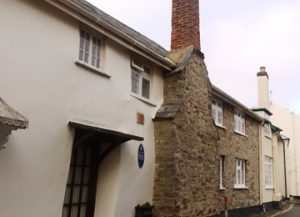Old buildings survive “because they are durable, versatile and adaptable”.
Heritage can support the sustainable management of change, particularly by allowing learning from past practices.
.
A new publication is just out, courtesy of Historic England:
As a new addition to Heritage Counts, Heritage and the Environment completes the suite of compendia of evidence that is compiled each year by Historic England on behalf of the Historic Environment Forum. Sustainability has at its core the triad of economic, social and environmental principles. England’s cultural heritage brings people together (see Heritage and Society), and its total economic value is greater than the sum of its parts (see Heritage and the Economy).
.
Here are some observations from a correspondent, pointing out that this publication “contains lots of things which are relevant to Sidmouth, as well as some which aren’t” – together with quotes from the text:
The section from page 36 is certainly useful, perhaps especially the fact that they have discovered that older homes have better thermal performance than had previously been thought:
Heritage buildings as part of the solution, not part of the problem:
Containing some of Europe’s oldest buildings, England’s built environment is characterised by a diverse range of traditional structures that have been designed with specific needs in mind and survive because they are durable, versatile and adaptable.
Page 45 is the section about sustainability:
Historic environment and sustainability:
We can learn from our past to protect our future England’s diverse cultural heritage is under constant threat from extreme weather events, development pressures and changes to land-use and agricultural practices. However, heritage can support the sustainable management of change, particularly by allowing learning from past practices. This applies as much to our day-to-day behaviour in our homes as to long-term environmental planning.
Page 50 about Cultural heritage and the future climate:
The conservation of heritage can help mitigate climate change
Climate change represents one of the most significant and fastest growing threats to the historic environment and our society. Although the extent of the impact on England’s landscapes and communities is uncertain, developing cultural resilience and preserving knowledge of previous climatic changes could help alleviate the significant risks associated with climate change.

When considering new housing we need to not only be looking at Passivhaus standards but also older forms of construction, another good reason that new buildings around the town should blend with the old.
Construction produces lots of emissions, as does destruction, so we need to avoid both where possible.
Keeping Sidmouth a wonderful visual experience will bring in all the economic uplift associated with historic areas.
.
photo: LITTLE COB MERTON COTTAGE. TUDOR COTTAGE, Sidmouth – 1333802 | Historic England